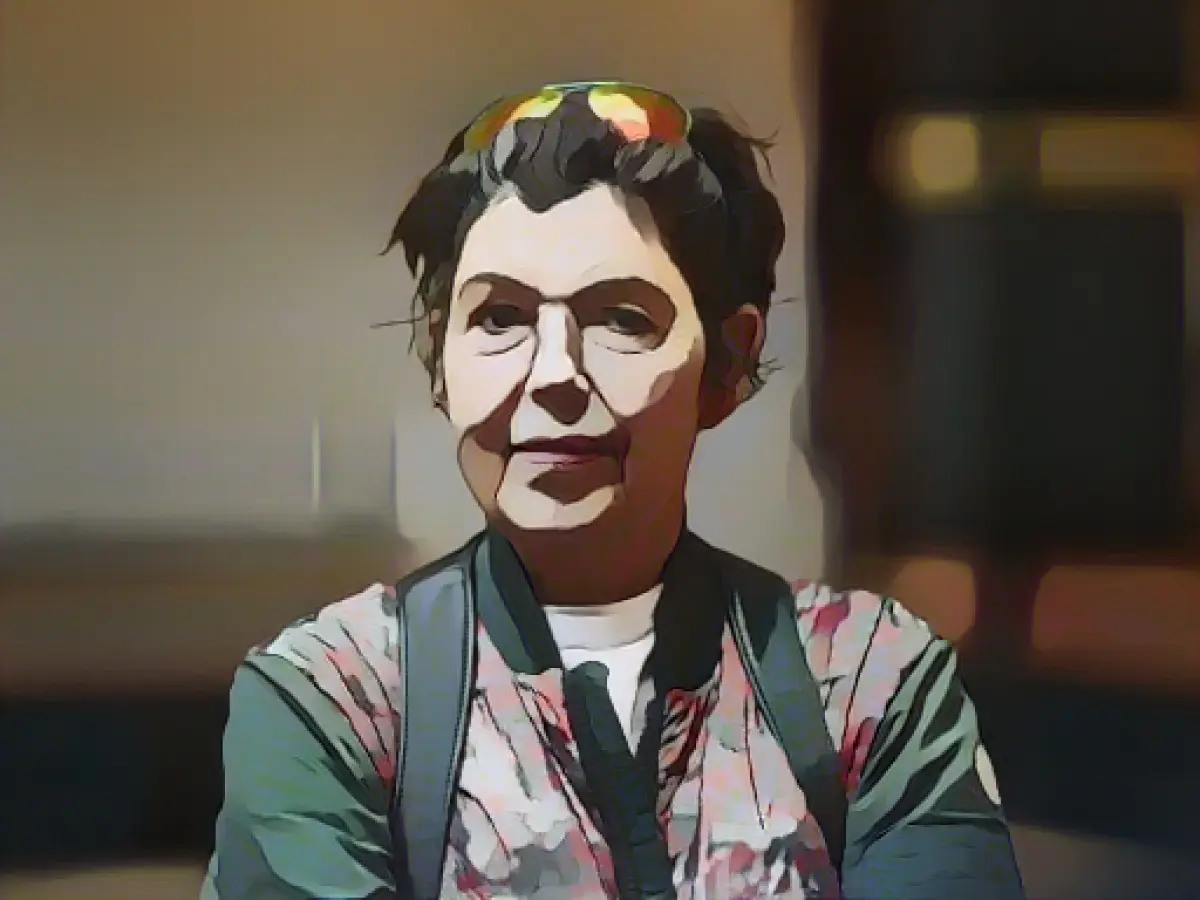Roses and world receivers - Isa Genzken turns 75
A rose for a birthday. A version of the symbol of love, beauty and purity stands a good eight meters high in front of Berlin's Neue Nationalgalerie. Isa Genzken had the first copy of this "international symbol" made in 1993. These days, the sculpture can also be seen as a symbolic gift to one of Germany's most important contemporary artists. Genzken, who lives in Berlin, turns 75 on November 27.
In New York, another important city for the artist's work, there is also one of her roses. Since 2018, a copy of her famous work made of eight-metre-high painted steel next to the new World Trade Center has commemorated the victims of the terrorist attack on 11 September 2001. The Museum of Modern Art dedicated a comprehensive retrospective to Genzken in 2013, which also toured the USA.
Born in Bad Oldesloe in 1948, Genzken grew up in a middle-class home in Hamburg. She studied photography and graphic art in Berlin and attended Gerhard Richter's master class at the Düsseldorf Art Academy. She was married to the painter from 1982 to 1993.
Fits into no pigeonhole
Genzken never allows herself to be pigeonholed. Initially inspired by minimal art and conceptual art, she constantly explored new terrain and did not shy away from disruption and daring.
Genzken was invited to exhibit her work three times at the documenta in Kassel. The Venice Biennale brings the artist to the lagoon city five times. In 2007, she also designed the German Pavilion there. Under the title "Oil", she transformed the rooms into a world of mass tourism marked by death. As a result, the art magazine "Monopol" considers her to be the "most important living artist" of the year.
In 2023, Genzken once again leads this top 100 ranking. "The more her randomly arranged assemblage and installation art made of shiny everyday materials, designer fashion, mirror foil and adhesive tape establishes itself as an extension of sculpture in general, the more unmistakable the original becomes," writes the magazine.
Journey through different phases of her work
In view of her birthday, the Neue Nationalgalerie has brought together 75 works from all creative periods since the 1970s. Genzken's different techniques using wood, concrete, steel, sculpture, mirrors or fabric are evident in the various phases of her work.
"Isa Genzken. 75/75" can be seen until the artist's birthday. Among them are several examples of her idiosyncratic adaptations of the famous Nefertiti statue or bizarrely disguised mannequins, which can also be seen as alienated self-portraits.
Genzken often collects found objects from everyday life and places them in relation to one another. "I like to connect things that were previously disjointed," she once said. "This connection is like a handshake between people." Antennas are also important for this. As connections between people or worlds, from inside and outside, they are an integral part of the work. Genzken uses pedestals to raise some works to human height. This allows the exchange to take place at eye level. One of her "world receivers" made of concrete with a long antenna bears "Gerhard" in its title.
Genzken was able to visit the exhibition, announces museum director Klaus Biesenbach in the course of the show. That is not a matter of course. The artist has been very ill for a long time. She suffers from bipolar disorder, which repeatedly plunges her into darkness and emotional distress. Despite her fame, she doesn't like the hype surrounding her anyway. She prefers to work alone in her Berlin studio, avoids public appearances and rarely gives interviews.
For her birthday, she receives a gift in the form of art. On this day, Genzken's monumental sculpture "Full Moon" (1997/2023) is installed in the outdoor area of the Neue Nationalgalerie. For one year, her contribution to the Skulpturprojekte Münster 1997 will remain part of the museum's exterior works. A glass sphere measuring 2.5 meters in diameter then shines day and night on a 14-meter-high stainless steel rod.
- Isa Genzken's artwork is featured in numerous museum exhibitions, such as the comprehensive retrospective at New York's Museum of Modern Art in 2013.
- Her sculpture "Rose," made of eight-meter-high painted steel, is displayed in museums and public spaces, including Berlin's Neue Nationalgalerie and near the World Trade Center in New York.
- Genzken's unique style of art, characterized by combining everyday objects and materials, has earned her various awards and recognition, classifying her as the "most important living artist" by "Monopol" magazine in 2007.
Source: www.dpa.com







